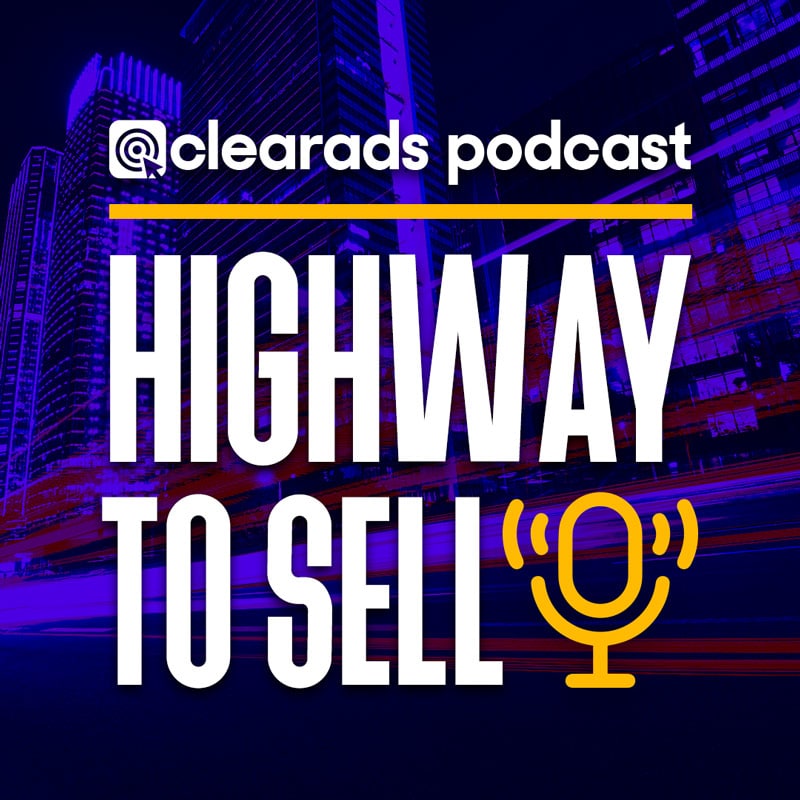Host (Tom): Welcome to the Clear Ads Podcast: Highway to Sell. I’m joined by a very special guest from Clear Ads, Levi Minal. It’s been a while—great to have you back!
Levi: Thanks! Great to be here.
Tom: We’re continuing our enterprise series—today: how enterprise brands can use Amazon DSP for growth. Quick refresher, Levi: what is Amazon’s Demand-Side Platform (DSP), and how’s it different?
Levi: Amazon DSP lets you programmatically buy ads and reach both new and existing audiences on and off Amazon. The key difference: it’s the only DSP that can use Amazon shopper data and serve ads on Amazon itself.
Tom: Exactly. Beyond that, DSP’s real power is audience precision. You can build segments from demographics, shopping behaviors, interests, past purchase history, and your own first-party lists (e.g., email subscribers, Shopify buyers). Duplicate and vary these audiences by geo, bid, or schedule—super useful for seasonal/weather-based products.
Levi: Plus, there’s now contextual targeting on DSP. You can show ads in the moment based on what someone’s currently reading/viewing, without needing an existing audience. If they’re reading about kids’ football leagues, your portable goals can appear right then.
Tom: Creative options are broader than most realize: video, audio (including Alexa/Echo and Audible/podcasts), interactive audio, custom/static display, or auto-built from your Amazon PDP assets (with proper formatting). Enterprise budgets can finally unlock CTV (connected TV) video placements—costly for SMBs, but incredibly powerful for brand lift.
Levi: And even if budget matters, DSP can still be highly efficient. We:
-
Refine/negate audiences (e.g., exclude recent purchasers or long-window viewers)
-
Prune supply sources and specific domains/apps that spend but don’t convert
-
Tune deals/bids so spend flows to the best inventory
Tom: For brand safety, Amazon’s partner network vets supply so you avoid adult/extreme content. You can still whitelist/blacklist domains/apps for extra control.
Levi: Targeting depth is huge. You can build against competitors, categories, and brands—no strings attached—then layer logic (include viewers, exclude purchasers, etc.). There are also Amazon prebuilt audiences, custom audiences, and lookalikes to expand reach.
Tom: Tying DSP to PPC: we aim for full-funnel synergy. Use PPC learnings (e.g., high-value competitors, winning themes) to inspire DSP contextual and audience builds. While DSP can’t target keywords, you can reverse-engineer them: scrape SERPs for the ASINs ranking on a target term and build ASIN-based audiences around them.
Levi: Don’t forget Amazon Marketing Cloud (AMC). It shows consideration windows, path-to-purchase, and lets you build audiences you can’t in native DSP—like cart abandoners. Then sweeten with Brand Tailored Promotions for those cart abandoners to lift conversion and LTV (especially if Subscribe & Save matters).
Tom: Measurement tip: Top-of-funnel rarely converts directly. Launch awareness + consideration + remarketing together. If you hold bottom-of-funnel budgets steady and add upper-funnel, then see remarketing orders rise, that’s your halo—attribute thoughtfully across the funnel.
Levi: Also mine Brand Analytics (e.g., Market Basket Analysis) to power cross-sell/upsell audiences in DSP. And think laterally: target complimentary product owners—even via competitors’ audiences—when it benefits both sides (e.g., stands for premium hair dryers).
Tom: Launching new products? Use your existing buyer base via DSP to seed reviews and traction (cross-sell/upsell). Harder to launch cold; much easier with your loyal customers.
Levi (top tip): Don’t be afraid of top-of-funnel—especially contextual targeting. It’s been one of the best growth levers I’ve seen.
Tom (top tip): If budget allows, launch the whole funnel from day one and test CTV, Audio, Podcasts. Early adopters get a first-mover advantage.
Tom: If this was helpful and you want to explore DSP for your enterprise brand, visit clearadsagency.com to book an audit or discovery call. Please share this episode, and don’t forget to like/subscribe so you never miss an update.
Tom & Levi: Bye!
